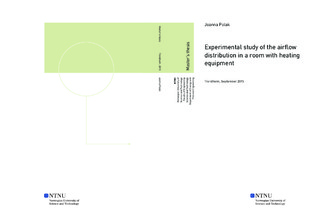| dc.description.abstract | Energy consumption in building sector has led to a great need for energy saving and energy efficient solutions for buildings. Next generation of buildings should apply high energy performance solutions in order to decrease the energy consumption. The Energy Performance of Buildings Directive (EPBD) requires that by the end of 2020 all new buildings should be nearly Zero Energy Buildings (nZEB). Therefore the tremendous efforts and emphasis have been put on development of new feasible solutions. Reducing the energy needs in nZEBs may lead to simplification of space heating system. With a long tradition and environmental friendly aspects, using wood stoves encourage their integration in nZEB. Recent investigation assume the one wood stove may ensure thermal comfort in the whole dwelling if the internal doors are open. However, it still remains unclear due to lack of understanding of some fundamental aspects, including heat transfer within or between different zones, temperature stratification inside zones, accumulation of particles in a certain zone in the building. The goal of this project work is to characterize the airflow distribution in a room with an air curtain and an additional heating equipment. Experimental measurements were performed in a full-scale climate chamber at NTNU Norwegian University of Science and Technology. The results of the experimental measurements are presented in this thesis to show the temperature and velocity distribution in the room, which contains two zones with temperature differences. This thesis assume better heat distribution through optimum passive and active methods. Therefore the effect of distributing the warm air through the slot diffuser generating downward plane jet has been investigated. The diffuser was installed above the doorway between warm and cold zones. Different discharged velocities from the diffuser were used during experiment. Additionally the influence of different heat source type and different heat source locations were investigated. The results showed that installing of the air curtain system between zones may decrease vertical temperature stratification and increase rapid of heat distribution between zones. Discharged velocities directly affect the performance of the airflow distribution between zones. Supplying the warm air through the air curtain system installed above the doorway may lead to reduction of the vertical temperature stratification inside both zones of the doorway. In addition, the investigation showed that the type of the heat source seems to not have a significant impact on the airflow distribution while using the air curtain system. | |

